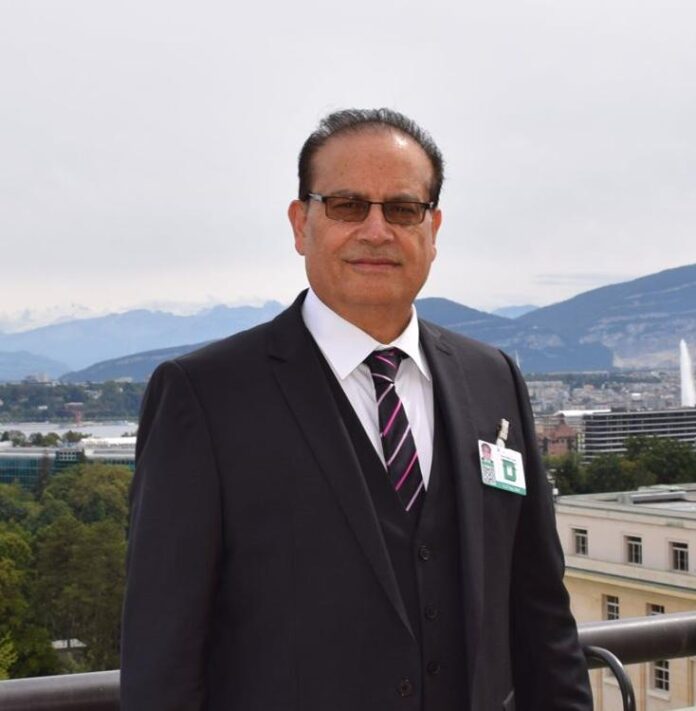By Qamar Bashir
“To put the world in order, we must first put the nation in order; to put the nation in order, we must first cultivate our family; to cultivate our family, we must first cultivate ourselves.” — Confucius, The Great Learning
China’s modern transformation cannot be understood without revisiting its civilizational foundations — a heritage of harmony, moral restraint, and self-cultivation that has guided its statecraft for more than five millennia. Unlike the expansionist powers that defined much of world history, China’s rise was shaped not by conquest but by conscience. It built walls to protect, not to dominate; it refined its governance rather than subjugating others. Its dynasties prized stability over aggression, and its influence radiated through culture, learning, and diplomacy rather than through force.
That sense of moral responsibility still anchors China’s modern policy. “The United States has three centuries and no burden of memory; China has five millennia and the full weight of civilization,” a Beijing historian once observed. This weight of memory continues to guide decision-makers in Beijing, reminding them that true legitimacy comes not from power but from the welfare of the people. The Chinese concept of statecraft, rooted in Confucian harmony and socialist humanism, insists that progress must uplift all regions, not merely the prosperous coastal centers.
When the People’s Republic of China emerged from the ruins of colonial humiliation and civil war in 1949, its leaders inherited a vast and uneven nation. National rejuvenation meant more than reclaiming sovereignty — it required bridging deep internal disparities and restoring dignity through inclusive development. Among the regions most in need of such renewal was Xinjiang, a land of immense beauty, diversity, and strategic value, yet long burdened by poverty and neglect.
At liberation, Xinjiang symbolized both challenge and promise. Covering 1.66 million square kilometers — one-sixth of China’s total territory — it was a landscape of extremes: towering mountains, endless deserts, and small, fertile oases clustered along the Tarim, Ili, and Junggar basins. Nearly 80 percent of the province was arid or semi-arid, dominated by the Taklamakan and Gurbantünggüt deserts and encircled by the Tianshan, Kunlun, and Altai ranges. But geography was destiny. Xinjiang’s 5,600-kilometer frontier touched eight countries — Russia, Mongolia, Kazakhstan, Kyrgyzstan, Tajikistan, Afghanistan, Pakistan, and India — making it China’s most internationally connected province by land.
For centuries, its cities like Kashgar, Hotan, and Urumqi had been jewels on the Silk Road, linking Chinese merchants with Persian, Turkic, and European traders. After 1949, the same geography that had once carried caravans and ideas promised to carry pipelines, highways, and digital networks. Xinjiang was no longer a distant periphery to defend; it was a bridge to connect.
Yet this vast potential stood on fragile foundations. In 1949, Xinjiang’s population numbered only 4.3 million, scattered across oases and highland pastures. Illiteracy exceeded 90 percent in many districts, infant mortality was over 200 per 1,000 births, and life expectancy barely reached thirty years. Per-capita income was estimated below 150 yuan a year — roughly sixty U.S. dollars at contemporary rates. Infrastructure was primitive: fewer than 3,000 kilometers of mostly unpaved roads, no railways, and negligible industrial capacity. The region’s economy remained predominantly subsistence-based, shaped by traditional farming and herding, and vulnerable to drought, disease, and isolation.
Xinjiang’s social fabric, however, was rich and resilient. The Uyghurs formed nearly three-fifths of the population, cultivating orchards and cotton in the southern oases. The Kazakhs, almost one-fifth, herded livestock across the grasslands of Ili and Altay, while smaller communities of Hui, Kyrgyz, Tajiks, Mongols, and Xibe contributed unique skills in trade, craftsmanship, and pastoral life. Han settlers, fewer than seven percent, lived mainly in urban centers such as Urumqi and Shihezi. Despite their diversity, these communities shared deep local knowledge of irrigation, herbal medicine, and desert ecology — indigenous wisdom that would later merge with modern science to form the backbone of Xinjiang’s revival.
For the new leadership in Beijing, integrating Xinjiang was therefore both a political and moral mission. The revolution’s promise of equality and justice demanded that development reach even the farthest frontier. Geography, in the eyes of the state, was not a constraint but a divine opportunity — to transform the western wilderness into a thriving link between China’s heartland and the greater Eurasian world. Chairman Mao’s First Five-Year Plan, launched in 1953, declared that “industrialization must serve the whole people and all regions.” That principle laid the foundation for the region’s transformation from subsistence to self-sufficiency and eventually to modern prosperity.
Beijing’s approach was carefully phased and deeply pragmatic. It began with what China called the “dual-track” strategy — cultivating human capacity while modernizing the material base. The first track focused on education. Schools were built across rural and pastoral areas; literacy drives reached adults as well as children; and vocational institutions trained the first generation of local teachers, doctors, and technicians. In a society where modern schooling was almost unknown, this was an intellectual revolution. Education became not merely an instrument of governance but a bridge between tradition and modernity — empowering herders, artisans, and farmers to become participants in national progress.
The second track focused on physical transformation. Surveys of coal, oil, and mineral deposits were conducted; irrigation systems were rebuilt and expanded; and model farms introduced scientific methods to improve yields. Roads and later railways linked Urumqi to Gansu and Kazakhstan, ending centuries of isolation. Pilot industries in textiles, food processing, and energy emerged, while healthcare and housing programs improved living standards. These modest beginnings carried profound significance: they gave Xinjiang its first modern infrastructure, a foundation on which later waves of reform in the 1980s and 1990s would build.
Governance played a crucial role in this transformation. Beijing recognized that success required not only resources but moral discipline and administrative competence. Local cadres were trained to balance ethnic diversity with unity, ensuring that modernization did not erode cultural identity. Governance, in the Chinese conception, was not domination but service — an act of moral stewardship aligning with the Confucian ideal that good government begins with self-cultivation and ends in social harmony.
By the late 1980s, the transformation of Xinjiang was no longer a vision — it was a living reality written across its deserts, valleys, and cities. In 1949, the region had barely 4.3 million people, most living in poverty, with life expectancy below 30 years and illiteracy above 90 percent. By 1980, its population had doubled to 8.3 million; life expectancy had climbed to 58 years; and literacy had risen beyond 65 percent. Primary schools had multiplied from barely 1,300 to over 6,000, and secondary and higher institutions — once nonexistent — were training a new generation of engineers, doctors, and teachers.
Infant mortality, which exceeded 200 per 1,000 births at liberation, had fallen below 70, while hundreds of hospitals and rural clinics now reached even the remotest oases. The region’s per-capita income, once less than 150 yuan, had increased nearly threefold by 1980, powered by new industries in energy, textiles, and food processing. Roads expanded from less than 3,000 kilometers of crude tracks to over 20,000 kilometers of paved highways, and the first rail lines linked Urumqi with Lanzhou and Kazakhstan, ending centuries of geographic isolation. Irrigation networks reclaimed tens of thousands of hectares of arid land, transforming wastelands into fertile cotton and grain fields. Urumqi, once a frontier garrison, had become a bustling city of half a million people — the commercial and administrative heart of the northwest.
These gains were not merely economic; they were civilizational. Health, literacy, and connectivity created a new consciousness among the people — a realization that they were no longer isolated tribes surviving at the edge of empire, but citizens of a rejuvenated nation moving confidently toward modernity. The sense of shared destiny — of being participants in a collective renaissance larger than ethnicity or geography — began to define the spirit of Xinjiang. A province that once symbolized remoteness was now a symbol of revival, a living testament to China’s faith that through education, planning, and moral resolve, even the harshest desert could bloom.
Xinjiang’s transformation between 1949 and 1990 was not a miracle of concrete and steel alone. It was a moral undertaking — a testament to China’s belief that civilization endures through harmony and shared progress. The guiding spirit of that transformation lay in an ancient truth: that national order arises from personal virtue, and prosperity from collective dignity. In resurrecting a region long forgotten, China did not simply build roads or refineries; it reaffirmed a civilizational covenant — that to put the world in order, one must first cultivate the self, the family, and the nation.
Press Secretary to the President (Rtd)
Former Press Minister, Embassy of Pakistan to France
Former Press Attaché to Malaysia
Former MD, SRBC | Macomb, Michigan, USA

















